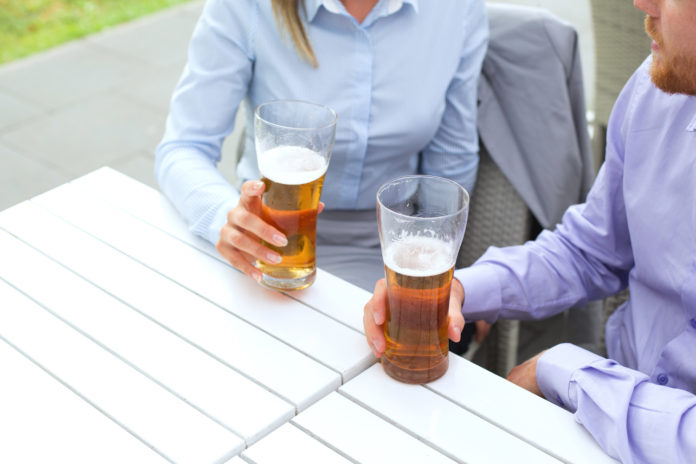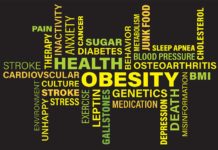The American Addiction Centers (AAC) resource alcohol.org, in partnership with city-data.com, recently conducted a study to determine how many non-drinkers there are in the U.S. and where they are located. Alcohol has been a fixture in all human cultures for 6,000 years, with archeological evidence of beer production as far back as 13,000 years ago. The history of alcohol production and consumption is at least as long as that of bread. In fact, beer has been so revered by humans for so long, it is now believed to have been the motivating factor behind the introduction of cereal grain agriculture in some areas of the world.
Fast forward to today, and the consumption of alcohol is still central to human cultures around the world. While the amount of alcohol consumption varies from country to country and culture to culture, most countries in the world indulge in regular, moderate consumption. In the U.S., alcohol consumption is prevalent. According to the 2015 National Survey on Drug Use and Health (NSDUH):
- 4% of people have had at least one drink in their lifetime
- 1% of people had a drink within the past year
- 0% of people had a drink within the past month
- 9% of people engaged in binge drinking in the past month
- 0% of people engaged in heavy drinking in the past month
Clearly, plenty of alcohol is being consumed by a large portion of the population. However, 30% of the American adult population do not consume alcohol at all, and abstinence is more pronounced in some American cities than others.
Cities with the Most Non-Drinkers
According to the alcohol.org study, the cities in the U.S. with the most non-drinkers (defined as people who do not drink alcohol at all) primarily lie along coastal areas. Most of those are in areas where there is a substantial beach culture. California has the most cities with a high non-drinking population, with five cities making the top 10. Honolulu, Hawaii; Hialeah, Florida; and three cities on the northeastern coast also make the top 10.
What is it about these locations that inspire a non-drinking culture? California, for example, is known for its health-conscious culture, and with 12 cities represented on the full list of 50 cities, the connection between health and not drinking is hard to ignore. With cities in California, Hawaii, and Florida dominating the top 10, the sunny and warm environments seem to be a link. But, when we look at the cities with the fewest number of non-drinkers, we can eliminate climate as a driving factor.
Cities with the Fewest Non-Drinkers
The majority of the cities that have the lowest number of non-drinkers are in the American southwest, arguably the most hot, arid part of the country. Four of the cities are in Arizona and three are in Texas, leaving one in Boise, Idaho; one in Santa Ana, California; and one in Pittsburgh, Pennsylvania. Texas has 12 cities in the top 50 cities with the fewest non-drinkers.
One might argue that in Texas and Arizona, there is a high rural population, but in reality Of note, this study does not include the amount of alcohol consumed, just whether or not it is consumed. So, where does that leave us?
Drinking Diminishing in Young Populations
Perhaps one explanation for the high percentage of non-drinkers in many locations can be linked to the fact that there has been a notable decrease in the amount of teen drinking since the early 2000s. In addition, 22% of millennials have cut down on the amount they drink. It turns out that it’s becoming more popular and desirable to enjoy low- or non-alcoholic beer, particularly craft beer, as millennials tend to be moving away from mass-market beers. In other words, they want the flavor and refreshment without the buzz.
For some millennials, the reduction in alcohol consumption is often related to the fact that they simply can’t afford to drink often or in excess, or would prefer to spend their money elsewhere. They also tend to lead a more balanced, healthy lifestyle than previous generations. Many millennials exercise regularly, practice yoga, and meditate, which provides them with a natural way to relax and cope with stress. Of those who don’t engage in these activities, there is an increase in the amount of alcohol consumed.
Not only that, but the increased legalization and use of cannabis plays a part in the reduction in drinking among people. One study found that in countries where the use of cannabis has been legalized, alcohol sales dropped by more than 12%. In the U.S., states that have legalized the recreational use of cannabis have seen alcohol sales decrease by 15%. Of note, the use of recreational marijuana is legal in California, where a large number of non-drinkers reside.
It’s not clear yet whether there is a correlation between increased cannabis availability and legality and the decrease in alcohol sales, but it certainly opens the door to further study. It’s also a trend that has been noticed by the beer, wine, and spirits industry. Some companies have even released non-alcoholic beverages that are infused with CBD, the non-psychoactive component in marijuana.
Alcohol Still an Issue
Despite the heartening signs that in some regions of the U.S. people are abstaining from consuming alcohol, there is still a massive problem with its consumption and the use of cannabis and other recreational drugs. There are nearly 20 million people in the U.S. aged 12 and over that struggle with a substance abuse disorder (SUD) related to drug and/or alcohol use. For this reason, treatment for people with SUD and public education are paramount in ensuring these numbers drop and that people recover to live happy, fully functional lives.
This is where AAC and alcohol.org come into the picture. Alcohol.org is a resource of AAC that is dedicated to the education of the American public, with the goal of helping people understand the seriousness of alcohol use disorder (AUD) and to help eliminate misconceptions about AUD and challenge the cultural norms around drinking.
AAC is a leading organization, dedicated to providing addiction treatment services to Americans in treatment centers across the U.S. They offer 90-day treatment programs, with a guarantee that patients will stay clean and sober, or they will receive an additional 30 days of treatment at no extra charge. AAC treatment programs are designed with a holistic approach in mind, taking into account a patient’s environment, lifestyle, and physical and mental health. AAC is the only publicly traded treatment organization in the country and they have a success rate that is double the national average.
If you or someone you know has experienced blackouts more than once and you feel you need help, please call us on our 24/7 helpline for the public at 1-800-ALCOHOL. For more information visit americanaddictioncenters.org or follow them on Facebook.






